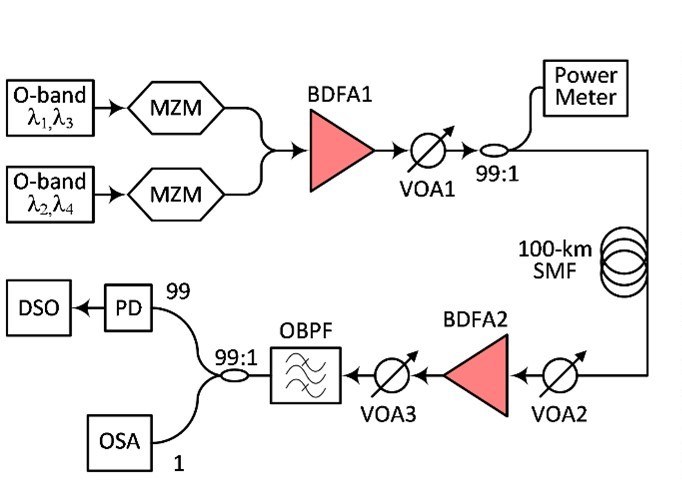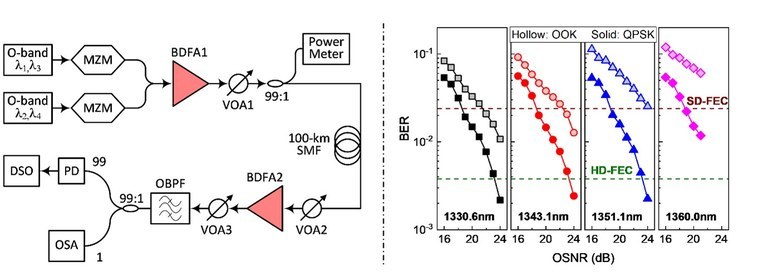
Case study: Wideband optical transmission
Transmission systems are rapidly approaching maximum capacity. Expansion of the usable bandwidth of optical fibres offers a direct route to alleviating this challenge. Research by NDFF at the University of Southampton has made significant progress in this area in recent years.
The invention of the erbium-doped fibre amplifier has enabled multi-wavelength communications over a wavelength range of 30 nm, which has in turn enabled network providers to grow their offering over a resource that has often been viewed as being practically limitless. This view of the fibre bandwidth as being a limitless resource is rapidly changing. Today, transmission systems are approaching the maximum possible capacity (the so-called Shannon limit) available within the bandwidth of erbium-doped fibre amplifiers. Expansion of the usable bandwidth of optical fibres offers a direct route to alleviating this challenge. For this to be achieved however, new optical amplifiers need to be developed. These amplifiers should be complementary to the established erbium-doped fibre amplifiers in their wavelength of operation, while offering comparable performance.
Research at the University of Southampton has achieved significant progress towards this direction in recent years, and has demonstrated a range of doped novel fibre amplifiers that cover a significant proportion of the low-loss spectrum of silica optical fibres. A technology that offers significant promise is that of bismuth-doped fibre amplifiers, which can be engineered to offer gain over a broad range of relevant wavelengths [1]. Of particular interest has been amplification in the range 1330-1370nm (within the O-band), where several (short-reach) commercial communication systems currently operate, benefiting from the low chromatic dispersion of silica optical fibres and the availability of inexpensive optical sources.
Through a series of experiments researchers of the Airguide Photonics programme have demonstrated the extension of the reach of communication systems operating in the O-band and have achieved transmission distances in excess of 100 km to date (Fig. 1), [2]. The NDFF is already building its capability towards this direction. Recent investment has allowed us to upgrade a substantial part of the network to enable transmission in both the C- and L-bands. This establishes NDFF as a cutting-edge transmission testbed, where the addition of the novel amplification technologies will enable the demonstration of true value.

Fig.1 Amplified transmission in the O-band using bismuth-doped fibre amplifiers.
This work has been funded by the UK EPSRC (Airguide Photonics EP/P030181/1).
For further information, contact Prof. Periklis Petropoulos, ndff@ee.ucl.ac.uk.
References
[1] N. Taengnoi et al., "Experimental characterization of an o-band bismuth-doped fiber amplifier," Optics Express, vol. 29, no. 10, pp. 15345-15355, May 2021.
[2] Y. Hong et al., "Experimental Demonstration of 50-Gb/s/λ O-band CWDM Direct-Detection Transmission over 100-km SMF," in 2021 Asia Communications and Photonics Conference (ACP), 2021.
Published: 02 March 2022
